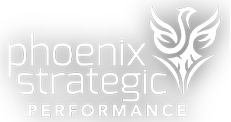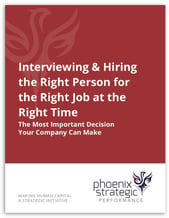Our world, at every level, WILL BE disrupted. The McKinsey Global Institute defines disruptive technologies as new emerging technologies that unexpectedly displace established ones and shake up the industry. Some disruptors will be easy to spot. Others will come from the most unexpected places. Organizations must consciously and continually focus on the outside horizon to anticipate disruption and deal with it as quickly as possible.
- Disruption and Disruptive Technologies – The New Normal
- Living with Disruption as the Norm. BAU and the Steady State are a Thing of the Past: Change has become the norm, and business as usual (BAU), formally the goal, will become a subset of Change, Transformation, and Transition Management. Prepare to accept the fact that as soon as the steady state of BAU is achieved, disruption will shake things up again.
- Welcome to the VUCA World (Volatility, Uncertainty, Complexity, and Ambiguity): This disruptive state will require new skills that have yet to be part of mainstream learning and development. At every level of the organization, these skills will need significant investment capital to ''upskill'' current employees to function effectively in the VUCA world. We are facing a workforce talent crisis of epic proportions, and VUCA skills are leading the talent deficit.
- Technology – We Are All Technology Companies
- Technology – What is its Role in the Organization: The technology function continues to live in two worlds – the technical and the strategic. This presents incredible operating challenges and dilemmas to technology organizations that need to have technically competent people who are also strategic and outwardly focused. This technology paradox is a new circumstance that requires a new operating context at all levels. Technology will be a company's key business driver. The technology function must be strategically aligned, future-focused, and technically robust. Executing this paradoxical operating paradigm will require a new blueprint and is not easy or straightforward.
- Ironically, The Greatest Challenge Isn't' Tech, But People: Since technology is often embedded in and drives the innovation and change process, bringing people with you on the change journey and creating the right culture is critical. The central challenge is to survive business and technology-driven change. The focus is to foster a mindset and framework that embraces change while neutralizing the fear of change. The challenge is to demystify the change process and accept that change is here to stay. That means rethinking everything about how a transformative organization operates today, including structure, people, and process.
- Rethink Traditional Human Capital Functions and Processes
- Getting Rid of the Traditional Annual Performance Reviews: Traditional performance reviews belong in traditional organizations operating steadily with minimal disruption. This is hardly the case today, yet organizations still cling to old, ineffective structures like performance reviews. Organizations today need to be present to future-focused. Employees need to be continually upskilled to meet the challenges of change. Both the organization and the employee must stay continually aligned with strategic initiatives. Learning and organized feedback done in the present with a view to the future is the current name of the game. Will the old Performance Review process help organizations reflect on the past, or will a newer, more robust continuous improvement system take the organization into the future?
- Ranking Employees and the Bell Curve Will be a Thing of the Past: What does ranking employees against each other really accomplish? Employees set the performance benchmark instead of the objective role and competencies setting the benchmark. It's time to objectively benchmark the job and rank employees against the benchmark rather than each other. According to bell curve thinking, some employees are always ahead of the curve, most are in the middle of the curve, and some will always be at the end of the curve. That's' fine for steady, stable organizations, but do they even exist anymore? Most employees need to be ahead of the curve to meet the challenges of today's competitive environment. What is so wrong about that? There is little room for average. The bell curve accepts and institutionalizes mediocrity. Can organizations survive and thrive with this archaic paradigm?
We invite you to learn more about how people, potential, and performance translate into your company's profits. In addition to earnings for your company, see how you can engage your employees and ultimately have more satisfied clients. Schedule a complimentary organizational benchmark assessment with our team to learn how to motivate your people to their full potential further to drive enhanced performance results to bring your company to the next level.





